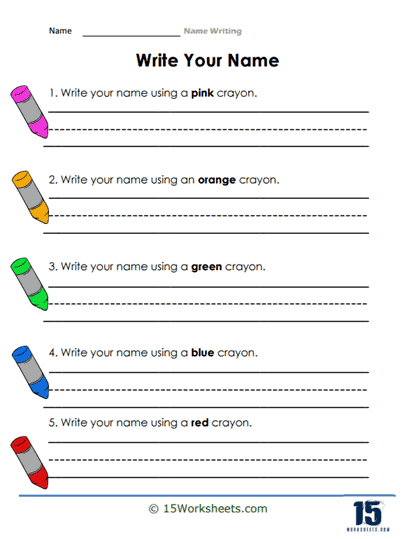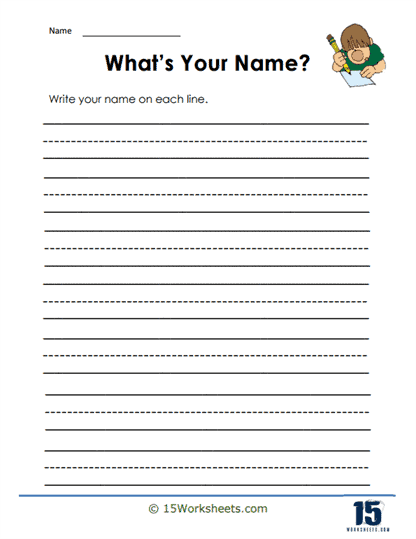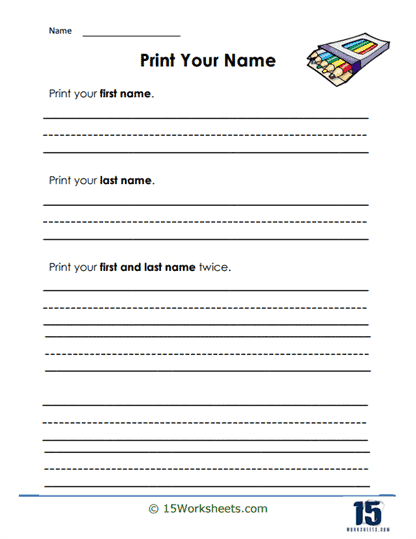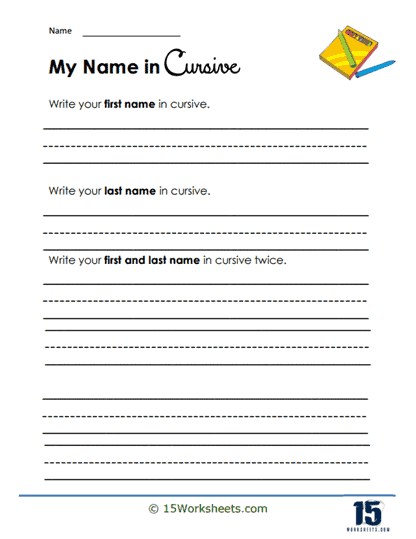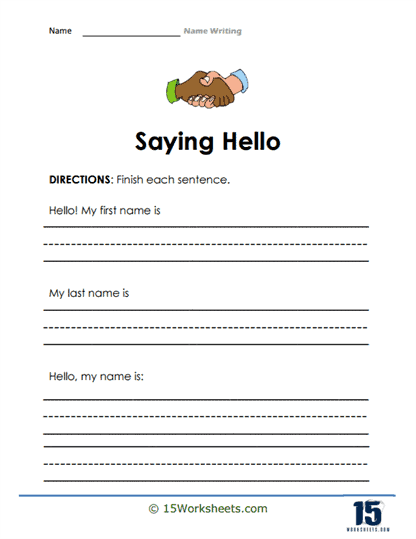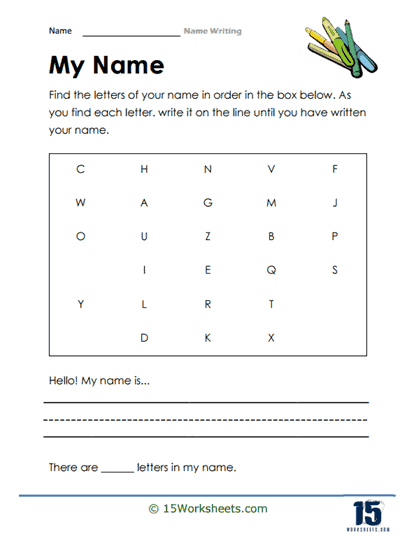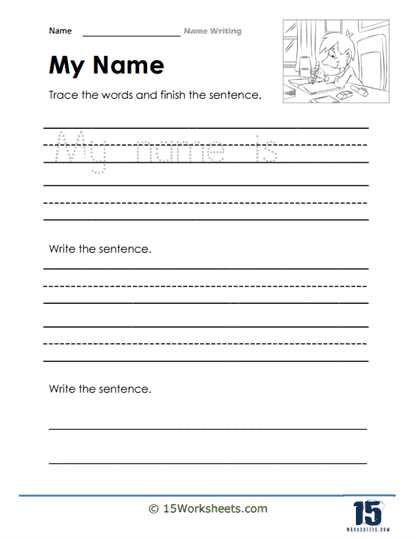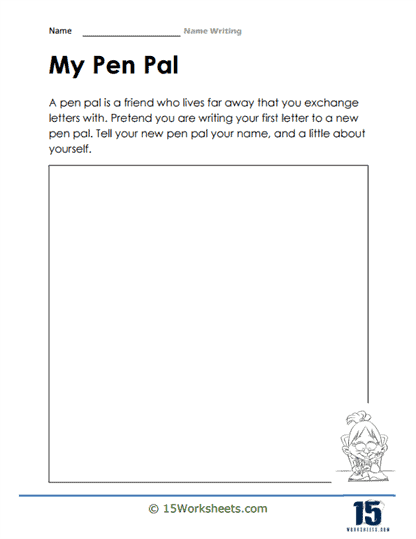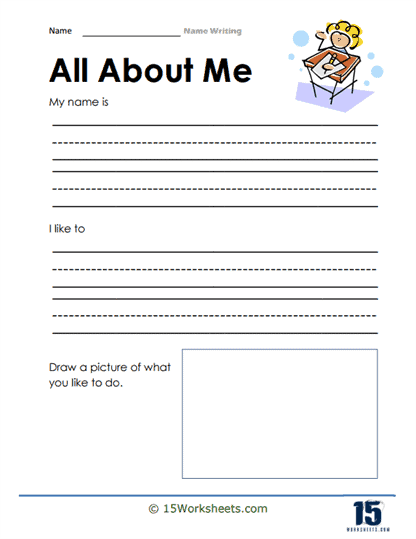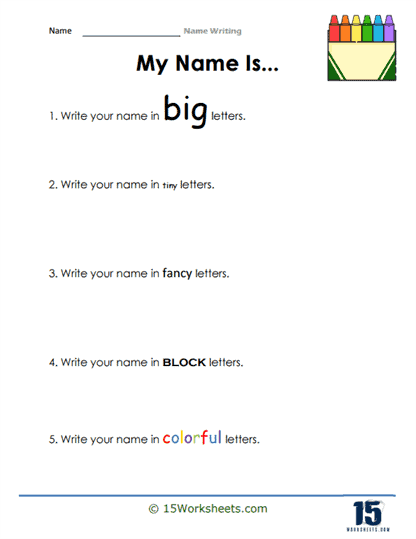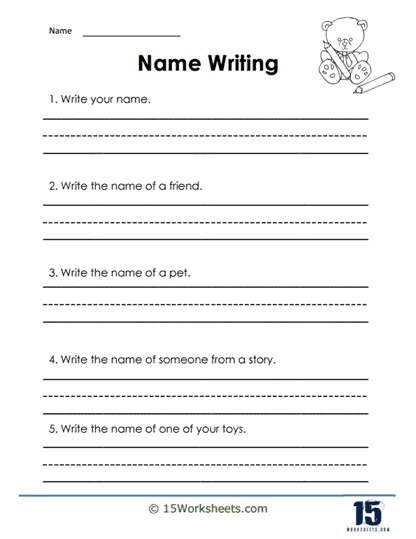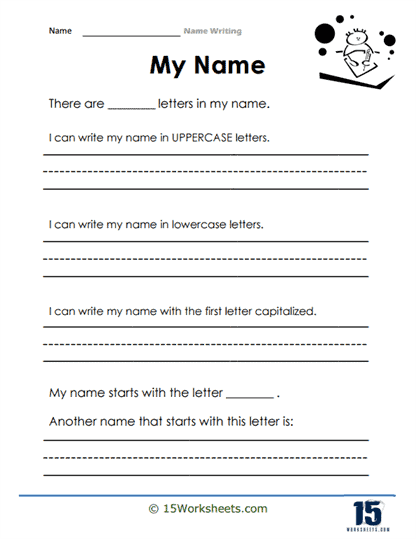Name Writing Worksheets
The Best Way to Teach Students to Write Their Name
When young students first hold a pencil, their parents start dreaming about the day they’ll begin writing their thoughts on paper – and it all starts with writing their own names. Teachers and educators know that writing your name is an essential skill; it takes alphabet recognition and pencil-gripping practice.
What is the correct age for being able to write one’s name? How can you introduce the concept? Is there an age that is considered too early to write? What is the best way to teach students how to write their names? Wondering about these questions is normal when you have a preschool student.
Methods of Teaching Students How to Write Their Name
Luckily, there are quite a few methods to teach a student how to write their name. The best approach, however, follows these simple steps:
- Name recognition
- Spelling the name
- Tracing the alphabet
- Writing the name
- Practicing more
- Name Recognition
Most children can hear their name and recognize it as their own before the age of 1. The challenge is to recognize the letters together while spelling your name visually. When introducing their name, ensure the students get plenty of chances to see the name throughout the day. Their name could be on a classroom wall, a wristband, water bottle, bag, or any other place in front of their eyes.
Spelling the Name
S A R A spells Sara! When the students realize the alphabets arranged in a certain way spell their name, it becomes easy for them to learn that particular group of alphabets. Introduce blocks at this stage and let the students arrange them in the shape of their names.
With the spellings imprinted in their brain, it becomes easier to place the letters. You can even use alphabets printed on cardboard sheets and let the students find the letters present in their names and then organize them in the correct order.
Tracing the Alphabet
The next step is letter formation. Before the students can start moving that pencil like a pro and trace their letters, they need to follow certain practices:
Holding and Gripping the Pencil
Young students have not yet perfected the pincer grip. They can struggle with holding the pencil and moving the wrist. Make sure they’re using a medium-sized pencil, enabling an easier grip. Let the students practice holding the pencil and find the grip that feels most comfortable to them.
No Lines! Just a Blank Paper
Students don’t require lined notebooks or pages when they’re just starting to write. When they are still learning how to grip a pencil, give them a blank canvas to practice on. Let them go wild, drawing straight and curved lines and generally moving the pencil in whichever direction they want. That’s how they’ll learn how much pressure to put on the lead and the paper.
Tracing the Letters
Once the students have gained familiarity with the pencil, you can now help them move on to tracing alphabets. Gently guide them that they are supposed to move the pencil from top to bottom and left to right for alphabet formation.
Instead of tracing on the dotted lines, if you write the letters with a highlighter marker and ask the students to trace the alphabet with their pencils, it makes it easier for them to recognize the letter while tracing it easily.
Writing the Name
Read out the first letter of their name, explain the direction of the stroke, and help them start to write the first letter. Once it is done, move to the second one and so forth. At this stage, we are not looking for perfection in strokes. Even barely legible letters will do. Encourage them in their effort.
Practicing for Perfection
Writing your name is a significant milestone and requires a lot of effort from the students, parents, and teachers. Make sure to let the students get plenty of practice without tiring them. We don’t want them to get bored of the activity. Working on one alphabet at a time will ensure they don’t feel overburdened and enjoy the process of writing their name.

